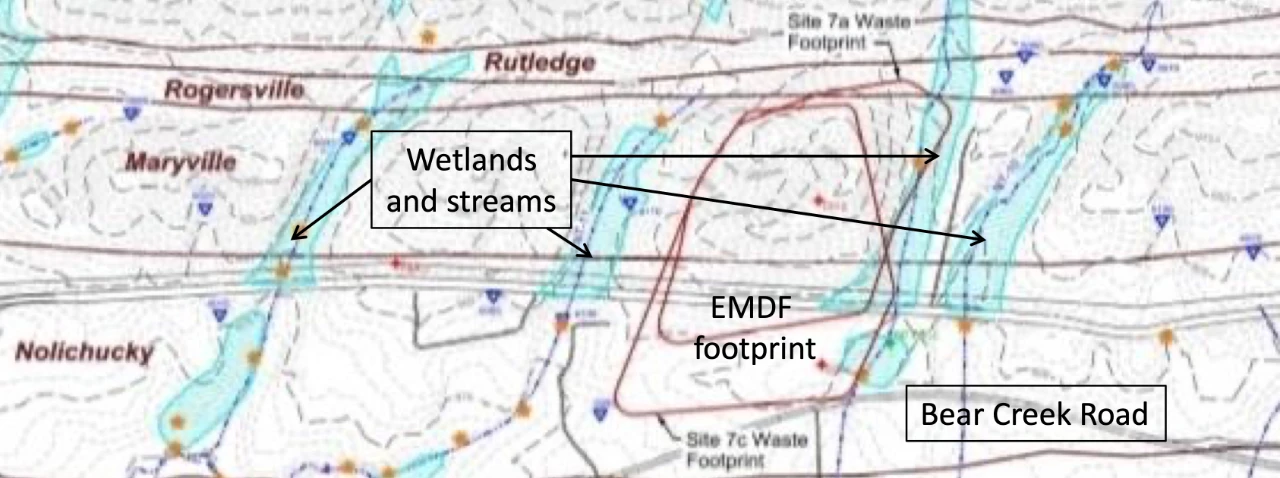Representatives of Tennessee Citizens for Wilderness Planning, the Harvey Broome Chapter of the Sierra Club and Advocates of the Oak Ridge Reservation offered a blunt description of the project:
“DOE’s current proposal calls for tearing down contaminated and radioactive buildings, burying most of the waste on-site, and releasing radionuclide pollutants – including chemicals that are known to cause cancer – into Bear Creek. This is a reckless plan that threatens the health of people who live near, use, and recreate in Bear Creek and other downstream waterways,” according to a joint news release from the organizations.
 The general wetness of the project site raises so much concern — as climate in our part of the world is trending toward more rainfall — that members of the Oak Ridge Environmental Quality Advisory Board have been calling it “Soggy Bottom.” (Names in brown letters on this illustration refer to geologic formations first described at the respective locations.) From: Jones et al. 2018
The general wetness of the project site raises so much concern — as climate in our part of the world is trending toward more rainfall — that members of the Oak Ridge Environmental Quality Advisory Board have been calling it “Soggy Bottom.” (Names in brown letters on this illustration refer to geologic formations first described at the respective locations.) From: Jones et al. 2018
The Southern Environmental Law Center (SELC), meanwhile, said in a letter to DOE officials that the Oak Ridge landfill proposal lacks transparency, and some fact sheets introduced only recently are inadequate. It calls for extension of the public comment period.
“Review of DOE’s fact sheets reveals that seemingly available information cited in these documents is currently missing or unavailable at the listed web addresses,” according to the SELC letter to the DOE Oak Ridge office.
“Prior to the opening of a public comment period on these fact sheets, DOE must ensure that the public has access to all referenced information and that all of the hyperlinks and websites referenced in the factsheets are in working order. Because this missing information has prevented the public from having adequate time to comprehensively review these fact sheets prior to the start of the public comment period, DOE should additionally extend the time period in which the public can provide comments to the Department regarding these documents,” according to the SELC letter.
“There is a clear need for DOE to tear down contaminated buildings on the Oak Ridge Reservation, but the community currently lacks critical information about the plans – including basic details about what will be put in the landfill; how wastewater will be treated before being discharged; and whether there are alternatives that would allow the waste to be disposed of offsite or outside (the) state. Without these details, it is impossible to know what long-term hazards nearby and downstream communities could be exposed to,” according to the statement from the local environment and DOE oversight groups.
